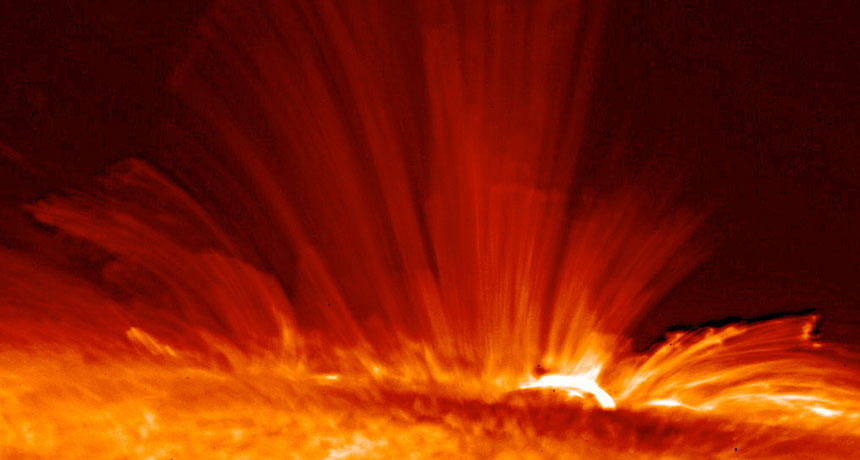Questions for ‘Cool Jobs: Solar sleuthing’

Super-hot, electrically charged gas (plasma) rises up in an arc from a sunspot. Scientists still know relatively little about how the sun works, despite its being our closest star.
Hinode, JAXA/NASA

Super-hot, electrically charged gas (plasma) rises up in an arc from a sunspot. Scientists still know relatively little about how the sun works, despite its being our closest star.
Hinode, JAXA/NASA